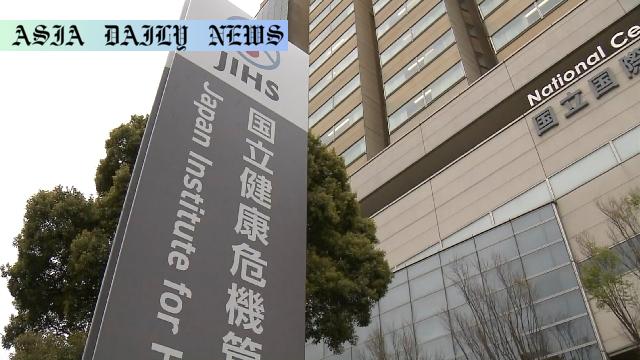Pandemic preparedness: JIHS, an integrated institute for future outbreaks, aims to deliver effective plans and treatment guidelines.
Japan creates JIHS by merging two institutes to strengthen pandemic prep.
JIHS focuses on research, treatment, and informing public about disease prevention.
Coordinated units aim to fast-track vaccine and medicine development during outbreaks.
Head Kokudo Norihiro emphasizes ongoing public awareness of infectious diseases.

Introduction: Japan Establishes a Unified Response to Infectious Diseases
In a forward-thinking move to secure public health, Japan has launched the Japan Institute for Health Security (JIHS), effectively integrating the National Institute of Infectious Diseases and the National Center for Global Health and Medicine. This groundbreaking step underscores the country’s commitment to preparing for future pandemics. In a world grappling with memories of the COVID-19 pandemic, JIHS’s mission is clear: advance research and collaborate on clinical initiatives to combat the next big outbreak.
This creation comes as global awareness of infectious diseases wanes, making it increasingly challenging to maintain preparedness. With dual expertise in research and treatment, the JIHS is positioned to respond swiftly and efficiently. By combining basic research, clinical care services, and health worker networks, the institute ensures Japan’s readiness for the next pandemic.
Comprehensive Pandemic Research and Response Plan
The JIHS’s framework integrates cutting-edge technology and specialized units designed to track and analyze global trends in communicable diseases. Kokudo Norihiro, head of JIHS, highlighted the importance of proactively managing risks as if pandemics could resurface tomorrow. The institute will not only serve as a research hub but will also provide the Japanese government with well-rounded policy recommendations for outbreak management.
From its onset, JIHS addresses the dual challenges of developing scientific solutions and maintaining public interest. With units dedicated to both studying pathogens and delivering treatments, JIHS will enable faster vaccine development and create robust treatment guidelines for affected populations. This level of organization ensures the likelihood of minimizing catastrophic impacts experienced during earlier pandemics.
How JIHS Plans to Engage the Public and Deliver on its Mission
A crucial element of JIHS’s initiative is public awareness. Memories of COVID-19 may fade, leading to reduced public interest. But JIHS aims to counter this by crafting strategies to disseminate vital information regarding disease prevention. Enhanced communication approaches will remind people of the importance of preventive measures such as vaccinations, hygiene protocols, and timely healthcare interventions during outbreaks.
Furthermore, JIHS will work to educate healthcare providers, ensuring a workforce prepared to respond to challenges that arise during future health scares. Ongoing professional training will enhance local and global responses to emerging pathogens. This human-centric approach complements its technological and scientific innovations, emphasizing the institute’s holistic approach to health security.
The Legacy of the Integrated Organizations
The JIHS is a merger of expertise from two distinguished institutions: the National Institute for Infectious Diseases and the National Center for Global Health and Medicine. The former focused primarily on investigating outbreaks and pathogens, while the latter specialized in deploying healthcare teams to active epidemic zones and advancing patient treatment methods through clinical care. Their integration ensures that critical gaps between research and practice are seamlessly bridged under the new JIHS framework.
Through their combined histories, these institutions have demonstrated resilience and an ability to adapt to changing challenges in the public health domain. Their merger reflects Japan’s understanding that pandemic preparedness requires an interdisciplinary, collaborative approach. By pooling resources, personnel, and institutional knowledge, JIHS is positioned as a global leader in pandemic research and response.
Conclusion: Leading By Example in Pandemic Preparedness
The establishment of JIHS signals Japan’s determination to wade through the complexities of pandemic management with innovation, preparation, and shared human solidarity. At a time when the world is gradually moving on from COVID-19, it is organizations like JIHS that remind us of the unpredictable nature of infectious diseases.
In actuality, JIHS’s establishment doesn’t just embody Japan’s response to current risks—it embodies preemptive action in line with global health priorities. Its presence reassures not just Japanese citizens but also the international community of Japan’s role in combating global health crises.



Commentary
Japan Paves the Way for Global Pandemic Readiness
Japan’s establishment of the Japan Institute for Health Security (JIHS) arrives at a critical crossroads in global health. As memory of the COVID-19 pandemic fades into the background of daily life, the need for proactive measures becomes more pressing. This decision to integrate two preeminent health organizations positions Japan as a leader in pandemic preparedness during a time when the momentum on global health has somewhat slowed.
The significance of JIHS cannot be overstated. Its ability to combine research, clinical care, and public communication sets it apart as more than just a scientific institution—it is a systems-level solution to pandemic management. The decision to focus equally on local outbreaks and global trends ensures a comprehensive reach. More importantly, JIHS understands the human cost of disease, reflected in its emphasis on patient care and communication with the general population.
Why Public Awareness is Key
What stands out from this effort is the focus on public engagement. All too often, interest in disease prevention disappears as outbreaks fade from the spotlight. Yet, Kokudo Norihiro’s vision of keeping infectious diseases on public radars is both timely and crucial. The pandemic has shown us how critical awareness and adherence to health guidelines are, not just in halting outbreaks but in preventing them altogether. By fostering a culture of vigilance, Japan ensures its population will remain agile in mitigating risks when the next disease strikes, as it inevitably will.
An Inspiration for the Global Community
The world has much to gain from Japan’s meticulous approach. Nations with fewer resources may look to JIHS as a model, leveraging international partnerships for shared expertise and resources. Moreover, JIHS represents a powerful narrative: that preventive health measures and investments today can save countless lives in the future. It’s a reminder that though the storm of COVID-19 may have passed, the conditions that created it persist. Only through preparedness and commitment can we hope to weather what lies ahead.